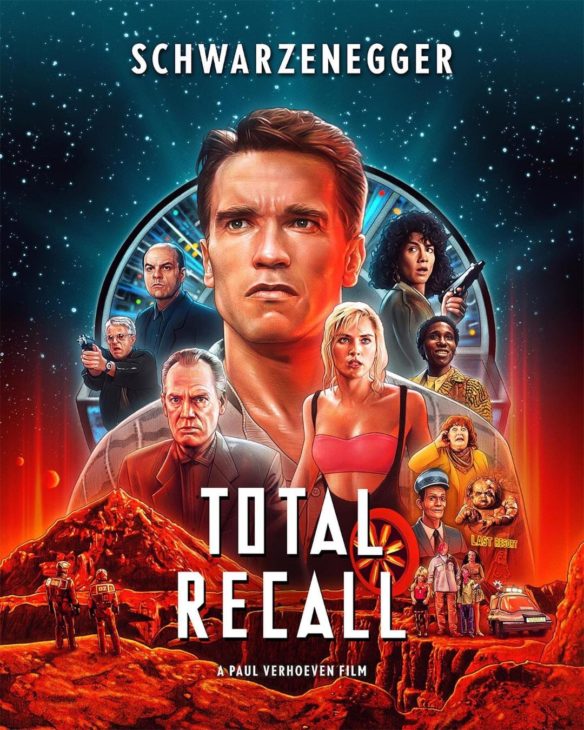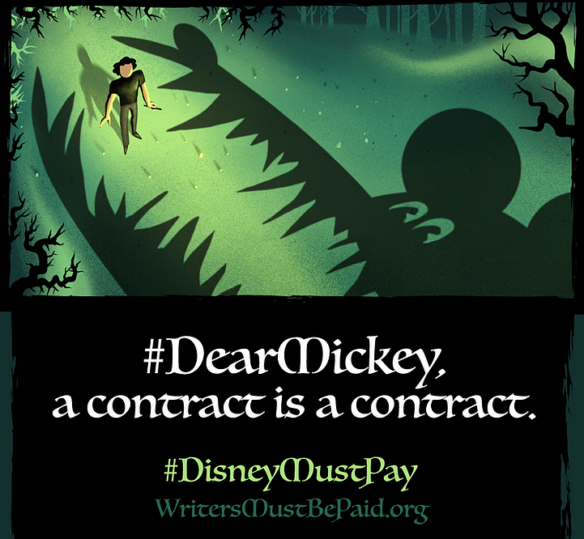(1) HANSEN BOOK FREE FROM TAFF. Another ebook is available from the Trans-Atlantic Fan Fund’s website, #60 in the free library, Rob Hansen’s Faan Fiction 1930-2020: an exploration. Cover artwork adapted from Rob Hansen’s cover for his fanzine Epsilon #7, July 1981. Approximately 61,000 words. (TAFF hopes you’ll make a little donation to the fund if you please.)

In this combined critique and anthology, Rob Hansen discusses the phenomenon of fan fiction (in the fannish fanzine sense) with a particular focus on the UK. His commentary is interspersed with many examples from such diverse fan writers as John Berry, C.S. Youd (John Christopher), Leroy Kettle, David Langford, Mark Plummer, Bob Shaw, Ian Sorensen, James White, Walt Willis – and Rob Hansen himself, including previously unpublished work. There are several surprises.
From Rob Hansen’s Foreword:
One aspect of fandom only lightly touched on by me in Then was fan fiction. By which, of course, I mean fiction about fans and/or fandom. This is a thread that has been woven through SF fandom since it began, enduring almost to the present day, and so is worthy of consideration in that light. I’ll be looking at the people who wrote it and all its various forms and the purposes to which they were put. Inevitably, the quality of the writing varies wildly, with that of those who later went on to write professionally usually being a cut above the rest.
…Where possible the pieces of fan fiction reprinted herein to illustrate various types and forms – all by UK fans – were specifically chosen from those not already available. As a result, most will be things the majority of readers won’t have encountered before.
(2) SF ART COLLECTORS WILL SPEAK. Tomorrow on Comic Art Spotlight Doug Ellis joins a panel with three friends — Glynn Crain, John Davis & Victor Dricks — discussing SF/fantasy art. All four have large collections of vintage SF art. They’ll be highlighting and discussing various artists and pieces in those collections, including creators like Virgil Finlay, Frank Kelly Freas, Ed Emshwiller, Wally Wood, Ed Valigursky, George Barr and many more. The panel kicks off June 1 at 8:00 p.m. Eastern:
(3) PLONK YOUR MAGIC TWANGER. The Haffner Press’ two-volume edition of The Complete John the Balladeer by Manly Wade Wellman is available for pre-order.

John, whose last name is never revealed, is a wandering singer who carries a guitar strung with strings of pure silver. He is a veteran of the Korean War and served in the U.S. Army as a sharpshooter (in the novel After Dark, he mentions that his highest rank was PFC). In his travels, he frequently encounters creatures and superstitions from the folk tales and superstitions of the mountain people. Though John has no formal education, he is self-taught, highly intelligent and widely read; it is implied that his knowledge of occult and folk legendarium is of Ph.D level. This knowledge has granted him competent use of white magic, which he has used on occasion to overcome enemies or obstacles, but it is primarily his courage, wit and essential goodness that always enables him to triumph over supernatural evils (although the silver strings of his guitar and his possession of a copy of The Long Lost Friend are also powerful tools in fighting evil magic), while basic Army training allows him to physically deal with human foes.
Haffner recently posted this photo of artist Tim Kirk’s dropcaps for the book.
(4) FEELIN’ GROOVY. John Coulthart has a gallery of “groovy” sf covers in “The art of Mike Hinge, 1931–2003” at { feuilleton }.
Back in March I ended my post on the psychedelia-derived art style that I think of as “the groovy look” with the words “there’s a lot more to be found.” There is indeed, and I’d neglected to include anything in the post by Mike Hinge, a New Zealand-born illustrator whose covers for American SF magazines in the 1970s brought a splash of vivid colour to the groove-deprived world of science fiction. This was a rather belated development for staid titles like Amazing and Analog whose covers in the previous decade wouldn’t have looked out of place in the Gernsback era. Opening the door to someone like Mike Hinge, a graphic designer as well as a general illustrator, was probably a result of both magazines having undergone recent changes of editorship.

(5) HEVELIN COLLECTION UPDATE. [Item by Bruce D. Arthurs.]Just found out the University of Iowa’s “Hevelin Collection” Tumblr account, which posted pics of items from Rusty Hevelin’s collection of fanzine and other SFnal material (but has been inactive for the last several years), announced about ten days ago they’re officially suspending the Tumblr. (But past posts will remain online for the foreseeable future.)
But you can still see over 700 fanzines, etc., from the Hevelin Collection in the Iowa Digital Library: Hevelin Fanzines — The University of Iowa Libraries.
And rather than single pictures like the Tumbler account did, the IDL archive leads to scans of the full contents, so far as I’ve tested it. Probably a fair amount of overlap with Fanac.org and eFanzines.com, but always good to have fannish history backed up in multiple places.
(The IDL archive may, it occurs to me, be old news to those who keep up with fanzines past and and present more than I do. “Slight” is a polite way to describe my level of involvement these days. Still, news to me.)
(6) MEDIA BIRTHDAY.
- May 31, 1990 — On this day in 1990, Paul Verhoeven’s Total Recall premiered. It starred Arnold Schwarzenegger, Rachel Ticotin, Sharon Stone, Ronny Cox, and Michael Ironside. It’s rather loosely based on Philip K. Dick‘s “We Can Remember It for You Wholesale” story. Ronald Shusett, Dan O’Bannon and Gary Goldman wrote the screenplay. It finished second at Chicon V for Best Dramatic Presentation to Edward Scissorhands. Most critics liked it well-enough though a number of feminist critics thought it excessively violent towards women. It currently holds a seventy-eight percent rating among audience reviewers at Rotten Tomatoes.

(7) TODAY’S BIRTHDAYS.
[Compiled by Cat Eldridge and John Hertz.]
- Born May 31, 1893 – Elizabeth Coatsworth. Newbery Medal for The Cat Who Went to Heaven (1930). Four “incredible tales” for adults; four books of poetry; ninety in all; memoir Personal Geography. (Died 1986) [JH]
- Born May 31, 1895 — George R. Stewart. As recently noted in the Scroll, his 1949 novel Earth Abides won the first International Fantasy Award in 1951. They were a British award and the first one, this very one, was given at Festivention. Other genre works would include Man, An Autobiography and Storm which is at least genre adjacent. (Died 1980.) (CE)
- Born May 31, 1910 – Aubrey MacDermott. Possibly the first fan. He always said he was. Unfortunately, the supporting evidence is thin. He may well have founded the Eastbay Club in the San Francisco Bay area around 1928. Anyway, he was Fan Guest of Honor at Westercon XXXX (Oakland, 1987). Here is his Origin Story as of 1990. (Died 1996) [JH]
- Born May 31, 1921 – Arthur Sellings. Six novels, fifty shorter stories, in Fantastic, Galaxy, Imagination, The Magazine of Fantasy & Science Fiction, Nebula, New Worlds, New Writing, Worlds of Tomorrow. Antiquarian, book & art dealer. (Died 1968) [JH]
- Born May 31, 1930 — Gary Brandner. Best remembered for his werewolf trilogy of novels, The Howling, of which the first was very loosely made into a film. He wrote the script for Howling II: Your Sister Is a Werewolf. The fourth film of the series, Howling IV: The Original Nightmare, is actually almost an accurate adaptation of the first novel. He wrote a lot of other horror and penned the novelization of Cat People. (Died 2013.) (CE)
- Born May 31, 1942 – Brian Burley. Active fan in Ohio and New York. Co-founded Marcon. In 1979 he was in FISTFA (Fannish Insurgent Scientifictional Ass’n); here he is (with S.H. Craig and Pat O’Neill) on “Fandom in New York” for the Lunacon XXII Program Book. Co-founded the Beaker People Libation Front, which Fancyclopedia III mildly calls “not entirely serious”; see here. (Died 2006) [JH]
- Born May 31, 1948 — Lynda Bellingham. She was The Inquisitor in the Sixth Doctor Story, “The Trial of The Time Lord”. Other genre appearances include the Landlady in Hans Christian Andersen: My Life as a Fairy Tale, and one-offs in Blake’s 7, Robin Hood and Julia Jekyll and Harriet Hyde. (Died 2014.) (CE)
- Born May 31, 1950 — Gregory Harrison, 71. I’m always surprised to discover a series didn’t last as long as I thought it has. He was Logan 5 in the Logan’s Run TV series which only lasted fourteen episodes. He was also in Dark Skies, twenty episodes before cancellation, as the voice of Old John Loengard, and had one-offs in Dead Man’s Gun (cursed object and that series actually lasted awhile), Touched by an Angel, Outer Limits and Miracles. (CE)
- Born May 31, 1961 — Lea Thompson, 60. She’s obviously best known for her role as Lorraine Baines in the Back to the Future trilogy though I remember her first as Beverly Switzler in Howard the Duck as I saw Back to the Future after I saw Howard the Duck. Not sure why that was. Her first genre role was actually as Kelly Ann Bukowski in Jaws 3-D, a film I most decidedly did not see. If you accept the Scorpion series as genre, she’s got a recurring role as Veronica Dineen on it. (CE)
- Born May 31, 1977 – Cat Hellisen, age 44. Fantasy for adults and children; free-lance editing; also archery, aikidô, figure skating. Six novels, a score of shorter stories. “The Worme Bridge” won the Short Story Day Africa award. More recently in Fife she likes the forests and the fields and the Forth. Has read Giovanni’s Room, Flatland, Herland, five plays by Aeschylus, Peter Pan, both Alice books, Les liasons dangereuses, The Wonderful Wizard of Oz. [JH]
- Born May 31, 1979 — Sophia McDougall, 42. She has a very well crafted alternative history series, the Romanitas series, In which Rome did not fall and rules the world today. She has two SF novels —Mars Evacuees is sort of YA alien invasion novel; Space Hostages reminds of a Heinlein YA novel. (CE)
- Born May 31, 1995 – Jeremy Szal, age 26. One novel, thirty shorter stories. Fiction editor at StarShipSofa 2014-2020 (Episodes 360-600). Collects boutique gins. See his review of Predestination at Strange Horizons here. [JH]
(8) COMICS SECTION.
- Half Full could be making a combined Alice in Wonderland and Simon & Garfunkel joke. Or not.
(9) WRITING PROMPT. From Agatha Chocolats:
Popehat suggests: “Cthulhu fhtagn exact change only.”
(10) SHAVER MYSTERY MAGAZINE ADDED BY FANAC. “If you’ve been hearing the words ‘Shaver Mysteries’ bruited about, now’s your chance to see what all the fuss is over,” says Fanac.org’s Joe Siclari. Check here: Shaver Mystery Magazine, by Richard S. Shaver. There are 7 issues of this semi-pro, related zine.
Siclari further says, “Some might not consider this a fanzine because rumor has it that it was paid for by Ray Palmer and Ziff-Davis. However the Shaver Mystery stories were a subject of great controversy in fanzines. So it is of related interest. It definitely was not a money-maker. It seems to fit into the category we later called a semi-prozine. And the art! McCauley, Finlay…”
(11) JUMPING IN. [Item by Martin Morse Wooster.] In the Washington Post, Michael Cavna interviews Pepe The Frog creator Matt Furie who is trying to recapture his character from the alt-right by creating non-fungible tokens featuring Pepe and other of Furie’s characters that have sold for up to $1 million. “Matt Furie is trying to reclaim his famous cartoon Pepe the Frog — through NFTs”.
To Furie, the NFT realm is about more than coin. During the era of Donald Trump, extremist social media users adapted Pepe so often that the Anti-Defamation League deemed it a hate symbol. But the exploding world of crypto-art is allowing the cartoonist to reclaim a character who was never meant to stand for much beyond love, peace, hedonism and altered-state chillaxin’.
“The NFT world is new, and there are a lot of optimistic people creating cool things,” Furie says of his interest in exploring non-fungible tokens — unique digital files whose origins and ownership can be verified.“Pepe does not have the baggage here that he does in the ‘real world,’ and I like working with utopians and optimistic freethinkers. There are so many possibilities.”
(12) A SCHULZ CURIOSITY. Cavna has also written: “Three ‘lost’ Charles Schulz strips have been rediscovered. Do they show the adult Lucy Van Pelt?”To some, they resemble “Peanuts” characters — if Charlie Brown and the gang had ever grown up.
These rare curiosities intrigue and baffle even the experts. “They’re a puzzle to me,” says Jean Schulz, wife of the late cartoonist Charles M. Schulz, who drew them.
They are the seven black-and-white works of comic art from the mid-’50s collectively called the “Hagemeyer” strips. Four of them have appeared in books. The three other “lost” strips were found and purchased at auction in May 2020— but have never been widely published, according to the Charles M. Schulz Museum and Research Center.
(13) IT’S IMPOSSIBLE. [Item by SF Concatenation’s Jonathan Cowie.] From this week’s Nature: “First Nuclear Test Created Impossible ‘Quasicrystals’”.
SF is full of exotic substances from Cavorite to Corbomite. Now it has been discovered that the world’s first nuclear bomb test created ‘impossible’ quasicrystals.
The previously unknown structure, made of iron, silicon, copper and calcium, probably formed from the fusion of vaporised desert sand and copper cables. Quasicrystals contain building blocks made up of arrangements of atoms that — unlike those in ordinary crystals — do not repeat in a regular, brickwork-like pattern. They have symmetries that were once considered impossible.
Materials scientist Daniel Shechtman first discovered such an impossible symmetry in a synthetic alloy in 1982. He won the 2011 Nobel Prize in Chemistry for the discovery. In subsequent years, materials scientists synthesised many types of quasicrystal,
expanding the range of possible symmetries. In the aftermath of the Trinity test — the first detonation of a nuclear bomb in 1945 researchers found a field of greenish glassy material that had formed from the liquefaction of desert sand. They dubbed this trinitite. The bomb had been detonated on top of a 30-metre-high tower laden with sensors and their cables. As a result, some of the trinitite had reddish inclusions: it was a fusion of natural material with copper from the transmission lines. The quasicrystal recently found from this trinitite has the same kind of icosahedral symmetry as the one in Shechtman’s original discovery.
(14) NOW IN 3-D. Nature also reports on “The most detailed 3D map of the Universe ever made”.
A survey of the southern sky has reconstructed how mass is spread across space and time, in the biggest study of its kind. The data provide striking evidence that dark energy, the force that appears to be pushing the Universe to accelerate its expansion, has been constant throughout cosmic history.
The Dark Energy Survey (DES) collaboration revealed its results in an online briefing on 27 May and in several papers posted online1.
…The researchers grouped the galaxies by colour, to get a rough indication of each galaxy’s distance from our own: as the Universe expands, galaxies that are further away appear redder because their light waves have stretched out to longer wavelengths. That way, the team was able to add a third dimension to its map.
Looking further away also corresponds to looking to the past, so a 3D cosmic map provides a record of the Universe’s history. By tracking how galaxies spread out over time, cosmologists can then indirectly measure the forces at play. These include the gravitational pull of dark matter, the invisible stuff that constitutes some 80% of the Universe’s mass and dominates the formation of galaxies and clusters of galaxies.
(15) DRONE WARFARE. [Item by Mike Kennedy.] It’s not exactly a Terminator-style HK-VTOL, but the first autonomous wartime kill by a robot might have happened last year in Libya. Gizmodo reports on the story: “The Age of Autonomous Killer Robots May Already Be Here”.
…“The lethal autonomous weapons systems were programmed to attack targets without requiring data connectivity between the operator and the munition: in effect, a true ‘fire, forget and find’ capability,” the UN Security Council’s Panel of Experts on Libya wrote in the report.
It remains unconfirmed whether any soldiers were killed in the attack, although the UN experts imply as much. The drone, which can be directed to self-destruct on impact, was “highly effective” during the conflict in question when used in combination with unmanned combat aerial vehicles, according to the panel. The battle resulted in “significant casualties,” it continued, noting that Haftar’s forces had virtually no defense against remote aerial attacks.
The Kargu-2 is a so-called loitering drone that uses machine learning algorithms and real-time image processing to autonomously track and engage targets. According to Turkish weapons manufacturer STM, it’s specifically designed for asymmetric warfare and anti-terrorist operations and has two operating modes, autonomous and manual. Several can also be linked together to create a swarm of kamikaze drones.
(16) CLOCKING IN. CBS Sunday Morning did a segment about “Exploring the boundaries of time travel”.
Breaking the bonds of time has been a timeless pursuit in science fiction stories and movies. Will it ever become science fact? Correspondent Faith Salie explores the possibilities of taking a journey to the future, or the past, even without a souped-up DeLorean.
(17) VIDEO OF THE DAY. In “Cruella Pitch Meeting” on Screen Rant, Ryan George, in a spolier-filled episode, says that the only way to get viewers interested in Cruelle DeVil’s backstory–“How does she become the person who wants to skin puppies?”–is to have her work for a boss even more evil than her. Also the screenwriter warns the producer that if he wants all those groovy hits of the 1970s in the movie, he’d better have plenty of money for the rights.
[Thanks to Cat Eldridge, John Hertz, David Langford, Jennifer Hawthorne, SF Concatenation’s Jonathan Cowie, Mike Kennedy, Andrew Porter, Martin Morse Wooster, JJ, Michael Toman, and John King Tarpinian for some of these stories. Title credit belongs to contributing editor of the day Nicole J. LeBoeuf-Little.]




